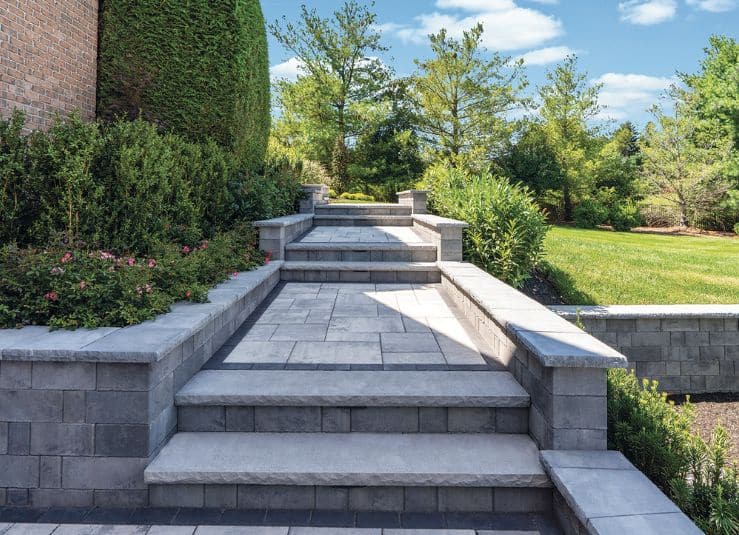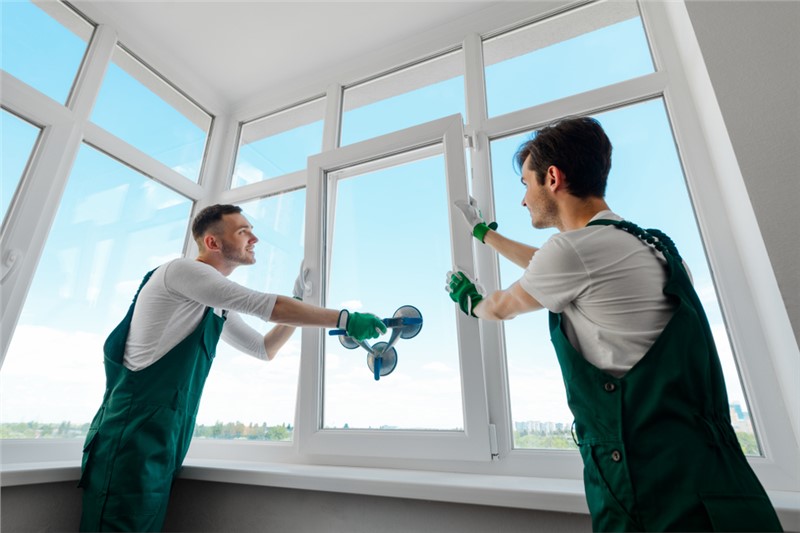Entryways and staircases do more than connect levels; they set the tone for how a home or commercial property feels on first approach. Choosing stone for these features creates an impression of permanence while allowing a wide range of stylistic decisions, from minimal to richly detailed. With experienced sourcing and fabrication, the right materials resist weather, control slip, and stay beautiful with minimal maintenance. This article explains how to evaluate top materials, how installation affects safety and longevity, and what design choices define contemporary projects. You’ll see how to blend craft with engineering so your steps welcome guests confidently—whether you’re working with a boutique fabricator or a full-service partner such as Stone Center. If you’re exploring Stone Treads And Steps for the first time, you’ll find the decisions are straightforward once you understand the fundamentals.
Popular stone varieties for entryways and stair designs
Material choice shapes the look, feel, and lifespan of an entry. Granite remains a benchmark for outdoor treads due to its compressive strength, low absorption, and compatibility with flamed or bush-hammered textures for traction. Bluestone offers a cool, architectural palette—largely medium to dark grays—and arrives in sawn or natural cleft finishes that read luxurious without being ostentatious. Limestone brings warmth and uniform graining, ideal for traditional façades, though density and finish selection should match your climate to minimize surface wear. Sandstone and slate add unique color movement and layered textures, suiting historic renovations or rustic settings when sealed and detailed appropriately. When you’re planning Stone Treads And Steps for heavy foot traffic, understanding porosity, finish, and slip resistance helps the project perform elegantly for decades.
Key characteristics that help narrow material selection
- Granite: exceptionally durable; takes a flamed finish for traction; broad color range from jet black to mottled grays.
- Bluestone: consistent coloration; cleft texture works beautifully on risers and landings; pairs well with steel or blackened metal railings.
- Limestone: creamy beiges to light grays; honed or sandblasted surfaces feel refined; select denser varieties for freeze–thaw regions.
- Travertine and sandstone: rich earth tones and movement; choose treads with filled pores and non-slip finishes for safer entrances.
- Slate: layered character and deep color; best in climates without severe freeze–thaw cycling unless specifically rated.
Think about how stones pair with surrounding materials such as brick, stucco, and wood siding. Granite or bluestone can modernize a traditional façade without clashing, while limestone softens contemporary lines with subtle warmth. Color complements also matter—cool-gray stones heighten the crisp edges of steel or glass, whereas buff tones integrate smoothly with cedar or tan masonry. If you’re restoring a historical property, seek treads that echo nearby paving or wall stones to maintain continuity. As you weigh aesthetics, test finishes underfoot; a simple water sprinkle can reveal how texture changes traction and appearance in real conditions.
Installation methods ensuring safety and structural strength
Even the best stone will underperform if the base, substrate, and fastening method aren’t correct. Exterior steps experience repetitive impact, moisture cycling, and temperature swings, so build-ups must manage drainage and differential movement. For on-grade steps, a compacted, well-draining aggregate base topped with reinforced concrete creates a stable foundation and reduces settlement. Mortar-set treads over a waterproofed and sloped substrate prevent moisture entrapment that can cause efflorescence or freeze damage. For suspended or steel-framed conditions, mechanical anchors and bedding adhesives are specified to accommodate expansion, vibration, and loads without transmitting stress into the stone.
Footings, substrates, and code-aligned geometry
Begin with footings sized for soil bearing capacity and frost line depth, stepping them with the staircase to transfer loads evenly. The substrate should be sloped 1–2% away from the structure, with drainage paths that keep water off the bearing surfaces and out of joints. Lay out riser heights within tight tolerances—no more than 3/16 inch variation across a flight—because consistent geometry is fundamental to safety. A slight tread projection (nosing) can improve ergonomics and water shedding; choose a profile that reduces trip risk, such as eased or chamfered. Where stone meets vertical elements, include soft joints with sealant or backer rod to isolate movement and prevent cracking.
For best results, combine a flexible, polymer-modified setting bed with full coverage under the stone, eliminating voids that can telegraph cracks under point loads. In cold climates, a capillary break and vapor-permeable waterproofing layer help prevent moisture migration into the stone. Use grout or joint compounds designed for exterior exposure, and strike joints to shed water. On larger landings, include control joints at intervals aligned with structural breaks to manage thermal and structural movement. Whether retrofitting or building new, confirm local codes for stair width, guardrail loads, and slip resistance—and consider a supplier like Stone Center for CAD details and technical data sheets that streamline approvals.
Balancing minimalism and sophistication in step design
Minimalist steps are not bare; they are distilled. Clean lines, simplified profiles, and restrained color palettes allow the stone’s natural character to stand out without visual noise. Thin, monolithic treads with crisp edges present a floating effect, especially when risers are recessed or darkened. Sophisticated doesn’t have to mean ornate; it can show up as perfectly consistent joints, precise shadow reveals, and lighting that grazes across a textured finish. Both approaches benefit from thoughtful proportion: tread depth that invites confident footing and riser heights tuned to the rhythm of movement. When you plan Stone Treads And Steps with these ideas, every footfall feels intentional and secure.
Choosing palettes, profiles, and lighting for subtle drama
Start with a palette that supports your architecture: cool blue-grays for urban modernism, warm buffs and creams for classic or coastal designs, and deep charcoals for bold contrast. Edge profiles have outsized influence on style—eased or micro-chamfered edges read contemporary; bullnose or quarter-round leans traditional; a hand-rocked edge looks artisanal. Lighting belongs in the early design conversation: recessed step lights, low-voltage strip lighting under nosings, or bollards along landings can elevate safety and atmosphere. Texture selection adds the final layer—flamed granite or sandblasted limestone offers tactile feedback without visually dominating the façade. If metalwork is present, echo its finish in small details such as fasteners, nosing trims, or railing base covers.
Sophistication also comes from restraint. Limit the number of materials and coordinate sheen levels so surfaces don’t compete. Mix textures purposefully: a cleft riser set beneath a honed tread introduces depth without clutter. In contemporary landscapes, integrate planting pockets or groundcover flanking the steps to soften hard lines while preserving the geometry. For public or hospitality environments, specify higher slip coefficients and integrate tactile cues at landings; this can be done beautifully with contrasting insets rather than bright paint. When aiming for a polished result with minimal fuss, experienced suppliers like Stone Center can propose combinations that achieve both function and an understated, high-end look.
Custom sizing and edge finishing for precision alignment
Precision begins with measurement, and stellar results depend on templating methods that capture real-site conditions. Existing masonry, framing, or landscaping often introduces millimeter-level deviations that reveal themselves in stair lines and joint consistency. Digital templating or laser scanning reduces guesswork and supports CNC fabrication for exact fits, especially on curved steps or sweeping entry arcs. For multi-flight staircases, accurate riser math ensures uniform stepping—consistency is not only comfortable but also safer. Fabricators can pre-assemble dry runs in the shop, labeling each tread to drop in sequence on site without excessive scribing or adjustments.
Edge profiles, surface treatments, and finishing techniques
Edge finishing is both a design choice and a safety decision. Eased, chamfered, and pencil-round edges soften contact points and mitigate chipping, making them reliable for high-traffic areas. Bullnose adds a classic silhouette and can visually thin the tread by rounding the leading edge, while a hand-chiseled or rock-faced front imparts a crafted, tactile richness. Surface treatments such as flaming, bush-hammering, sandblasting, or leathering calibrate traction and sheen. For elevations exposed to driving rain or snow, a slightly textured top with an eased edge often hits the sweet spot between safety and refinement.
Alignment hinges on more than width and depth; it includes the visual continuity across nosings and joint lines. When returns are visible on open-ended steps, mitered corners with reinforced epoxy joints create a seamless, monolithic appearance. Kerfing under the nosing can receive LED tape or a drip edge, protecting finishes while adding subtle illumination. Installers can use leveling clips or non-staining shims to correct minor substrate discrepancies without telegraphing lines through the surface. If your project involves a complex footprint, coordinate fabrication schedules with field conditions to ensure Stone Treads And Steps arrive ready to install, minimizing time on site and the potential for handling damage.
Modern 2025 styles emphasizing texture and natural contrast
Design in 2025 is guided by tactility and authentic materials, with stone celebrating its origin rather than hiding it. Expect to see amplified textures—micro-fluting across risers, field bush-hammering that softens reflectivity, and flamed granite tops paired with lightly honed returns. Contrasts are natural rather than high-gloss: pale limestone against blackened steel, deep graphite treads over warm cedar, or variegated bluestone with smooth concrete planters. Monolithic blocks remain popular for statement entries, but they’re often counterweighted by delicate details like knife-edge steel stringers or shadow reveals at the base. Sustainability also plays a role, with reclaimed stone or regionally sourced materials reducing embodied carbon while telling a richer story.
Integrating lighting, handrails, and landscape for cohesive experiences
Technology slips into the background as lighting and controls become less visible and more responsive. Warm-temperature LEDs at low brightness provide safe wayfinding without washing out texture, and smart drivers can dim during low traffic to protect night skies. Handrails take on sculptural simplicity in powder-coated steel or patinated bronze, sometimes integrated into masonry piers to keep visual clutter down. Plantings emphasize contrast and seasonality—think soft grasses brushing against crisply edged treads, or evergreen structure that frames stone throughout winter. These touches build a layered experience that feels curated yet effortless.
Floating stair effects continue to evolve, with cantilevered treads mounted off hidden structural steel and stone cladding delivering the mass and authenticity people love. Mixed-width modules—alternating narrow and wide treads—create rhythmic approaches that are both playful and accessible. Color stories lean toward cool-gray bases with an accent step or landing in a warmer tone, highlighting key thresholds like front doors or terrace transitions. As you refine specifications for Stone Treads And Steps in this vein, consider finishes that hold up to touch—edges that feel smooth where hands brush and textures that grip underfoot in rain. For cohesive supply, shop drawings, and finish samples aligned to these trends, coordinating early with Stone Center helps ensure the final installation looks current today and resilient for the long run.





